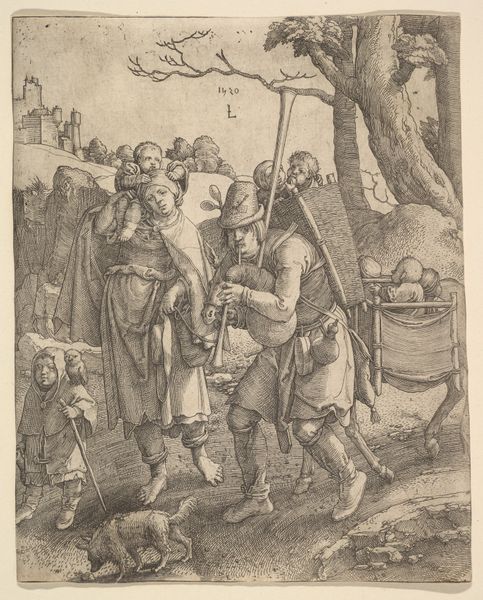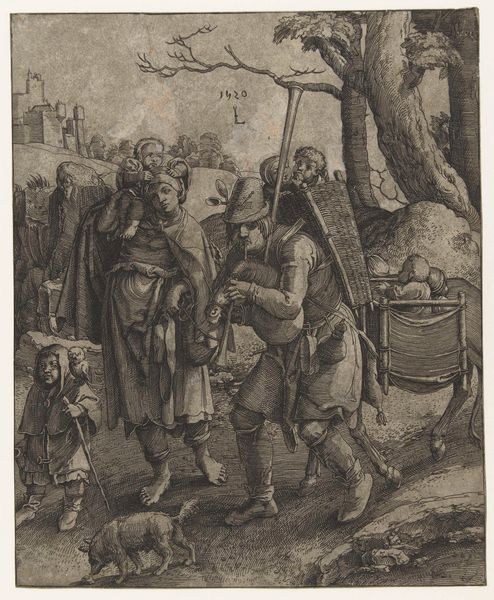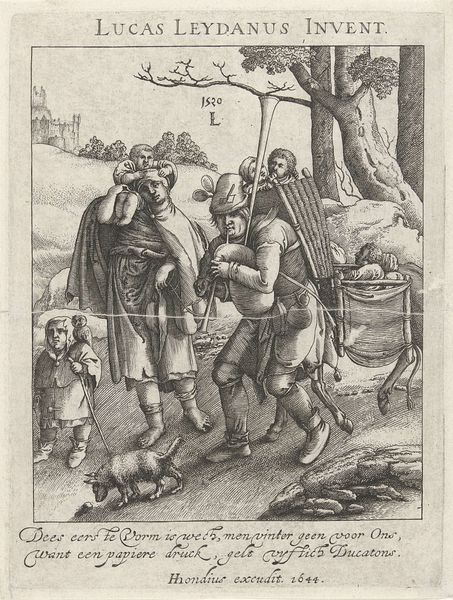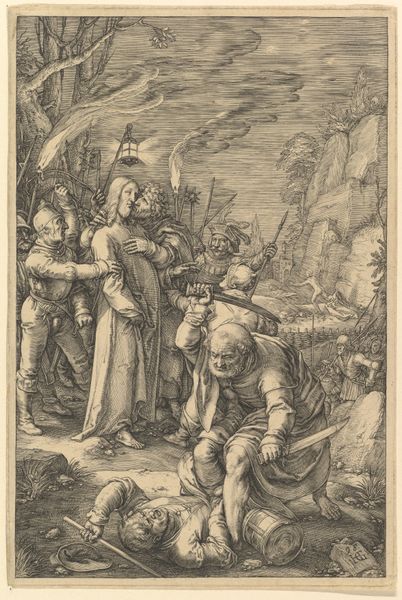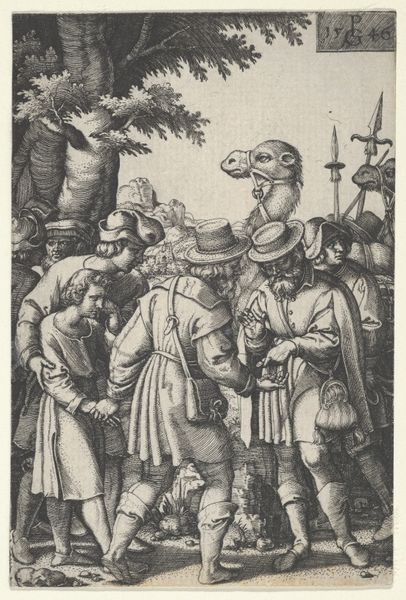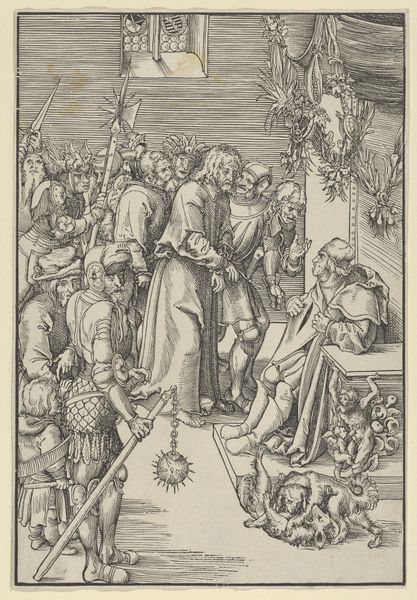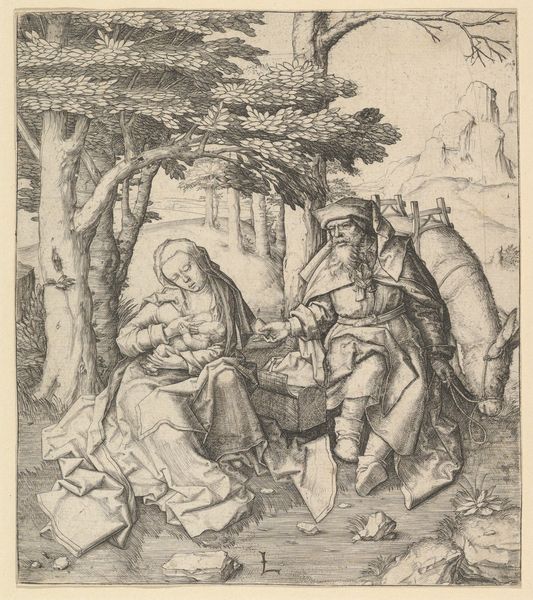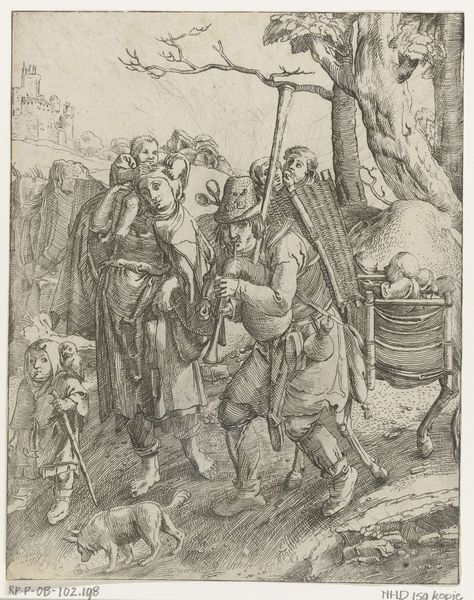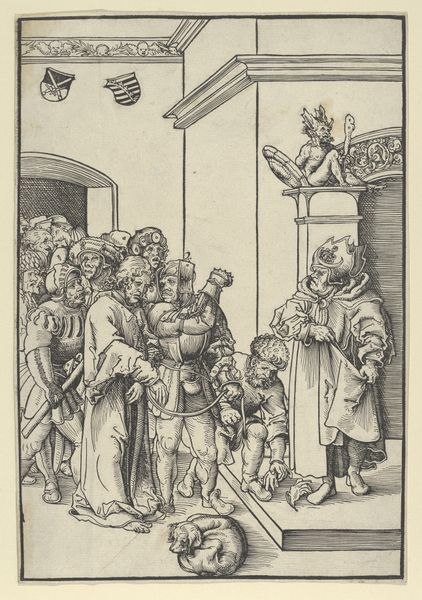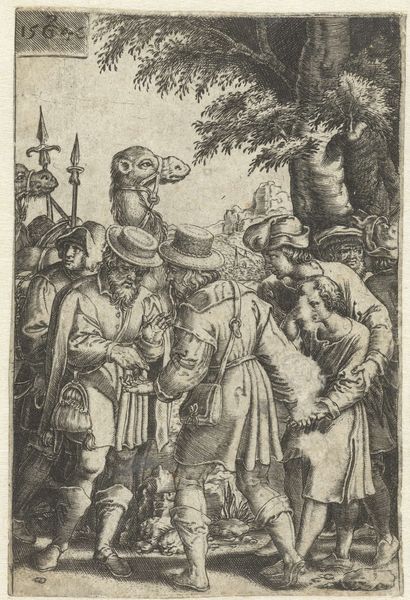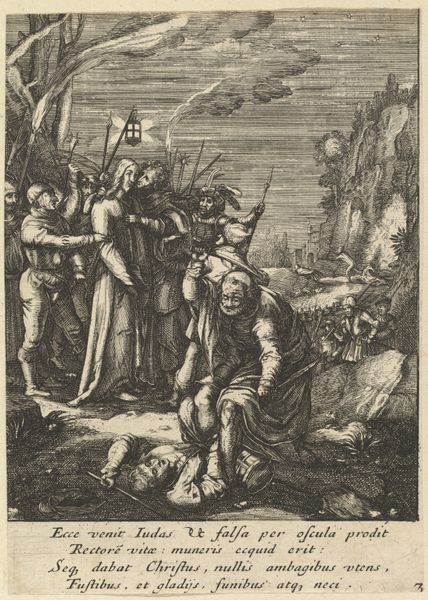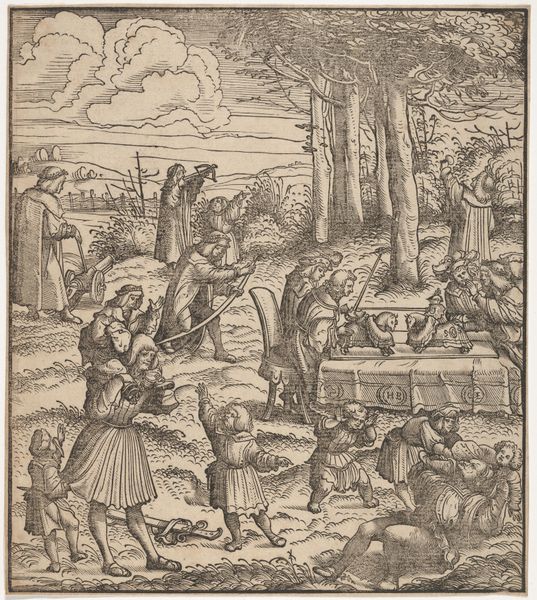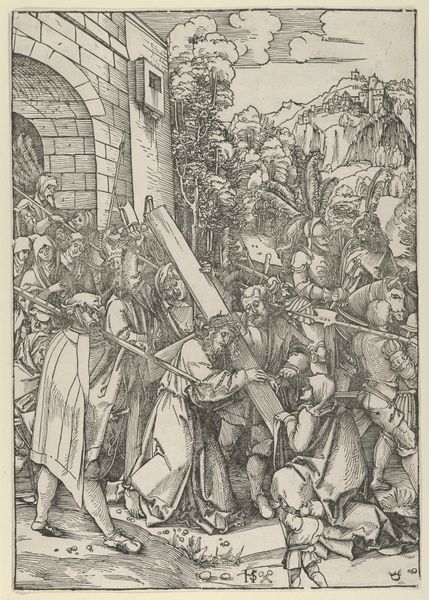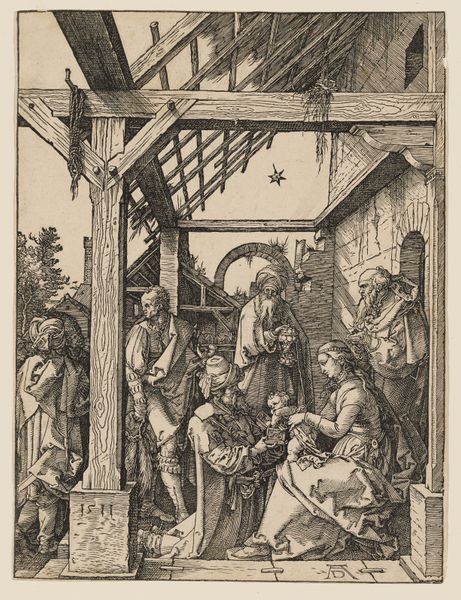
drawing, print, paper, ink, woodcut, engraving
#
drawing
#
narrative-art
# print
#
figuration
#
paper
#
ink
#
13_16th-century
#
woodcut
#
line
#
northern-renaissance
#
engraving
Copyright: Public Domain
Pieter Holsteyn II made this engraving, Till Eulenspiegel, sometime in the 17th century. The medium of engraving is crucial to understanding the print. Holsteyn would have used a tool called a burin to carve lines into a copper plate, each mark requiring deliberate force and precision. The density of these lines creates a range of tones, from the solid blacks of the figures' outlines to the subtle grays of the landscape. Look closely, and you’ll see that Holsteyn varied the marks, using hatching and cross-hatching to create texture and volume. This labour-intensive process speaks to the value placed on skilled craftsmanship during this period. By mastering this technique, Holsteyn was able to capture the essence of the Till Eulenspiegel folk tale, and the lives of ordinary people. The print bridges fine art and craft, offering insights into the social and cultural values of the time.
Comments
No comments
Be the first to comment and join the conversation on the ultimate creative platform.
